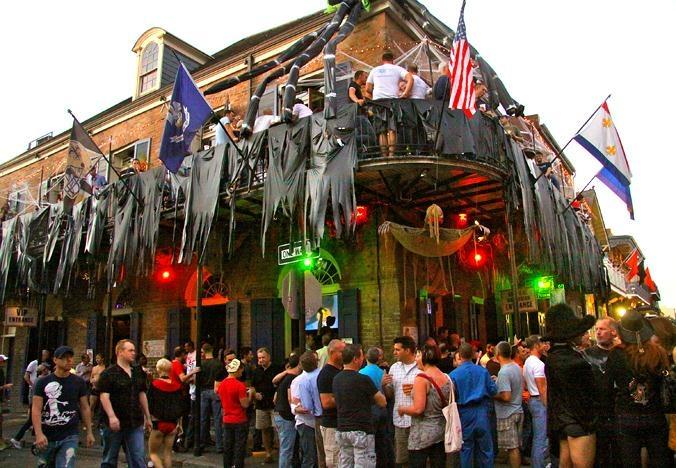It should come as no surprise that gay and lesbian history runs deep in the fabric of New Orleans, Louisiana. This is, after all, a Euro-flavoured city with a seriously flamboyant streak — where parades are thrown at the drop of an oversized hat and masks are as likely to appear for Easter as they are on Halloween. A place of colourful characters where Tennessee Williams said he found “the kind of freedom I had always needed” and penned parts of A Streetcar Named Desire in the 1940s, and an aging burlesque performer named Chris Owens — who resembles a drag queen, but isn’t — headlines her own kooky cabaret show for modern-day travellers.
Much New Orleans (or NOLA, the city’s common moniker) discourse is dedicated to its jazz and its high-calorie Cajun-Creole menus, but with its wrought-iron balconies draped across 18th-century Spanish architecture and flickering gas lamps, the French Quarter lends itself to costume dramas. In 1958, the city’s gay side and its flair for pageantry found the perfect union during Mardi Gras. The first gay Mardi Gras organization, the Krewe of Yuga — allegedly code for “You gay?” and nicknamed “KY” — formed to satirize the aristocratic events of Carnival season.
Four years later, police raided Yuga’s inaugural ball, but the community persevered, and by the ’80s, gay krewes were as prevalent in New Orleans as feather boas. A handful, led by the Krewe of Petronius, continue to host balls today, providing a glimpse into the local culture that most revellers along the bead-strewn parade routes miss.
NOLA’s most debauched gay event sprang to life in 1972, when a group of friends threw a party and told everyone to come dressed as their favourite “southern decadent.” Labour Day’s Southern Decadence weekend now draws more than 100,000 gay men to the city, having rebounded from its Hurricane Katrina cancellation in 2005. (Less is more these days in terms of attire.)
Halloween New Orleans, October’s major gay draw, celebrated its 28th anniversary in 2011, raising $135,000 for the HIV/AIDS services of Project Lazarus. The volunteer-run spectacular includes four days of gay events — including a themed dance party where costumes are required; its stage productions have featured twisted takes on everything from Moulin Rouge to Black Swan.
Like the jam-packed annual events calendar — which also includes the Tennessee Williams/New Orleans Literary Festival and the Gay Easter Parade — the city’s day-to-day gay and lesbian scene is well integrated into the mainstream mix. Stagger down Bourbon St to St Ann and the strip bars and jazz joints give way to the epicentre of gay nightlife. Drunken bachelorettes pose with drag queens in the street, southern hospitality trumps pretension at Bourbon Pub, and gay psychic Phillip Humphries delivers eerily omniscient tarot and palm readings at Marie Laveau’s House of Voodoo.
A block away sits Café Lafitte in Exile, which served its first cocktail in 1953, making it one of the oldest gay bars in the United States. Continue downriver from the French Quarter into the Faubourg Marigny and Bywater neighbourhoods for low-key gay eateries, or venture uptown for the boutiques of Magazine St, where gay actor Bryan Batt (Mad Men) owns the home accessories shop Hazelnut.
But even a seemingly off-season visit might yield an eventful twist. After all, “everything is a costume party in New Orleans,” says gay historian Roberts Batson. “They’re even doing the running of the bulls with roller derby women as the bulls.” That would be San Fermin in Nueva Orleans, led by the Big Easy Rollergirls. Mark the calendar for July.
Gay Mardi Gras in NOLA takes place Thurs, Feb 16 through Tues, Feb 21, 2012. Visit gaymardigras.net for more information.
Visit guidemag.com for more information to help plan a trip to NOLA, including more than 100 travel listings for gay and lesbian locales.

 Why you can trust Xtra
Why you can trust Xtra